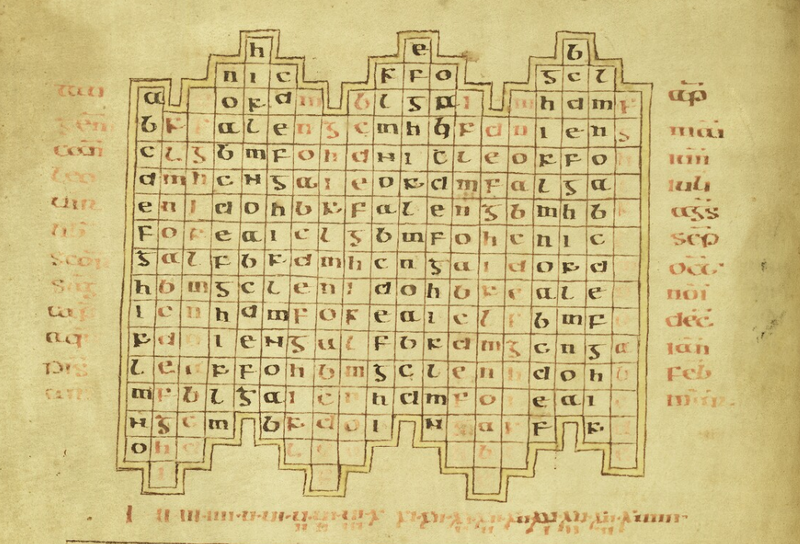Eusebius Riddle 57: De strutione
ALEXANDRAREIDER
Date: Mon 27 Dec 2021Infandus volucer sum et nomen habeo Pelasgum.
Et pennas velut usurpans avis, advolo numquam
Altius a terra, et conceptum neglego foetum
Forte fovere meum, sed foetu pulveris ova
Sparsa foventur, vel potius animantur in illo.
I am an unspeakable winged thing and I have a Greek name.
Though I pretend to wings like a bird, I never fly
Higher from the ground, and I fail to care for my offspring
Conceived casually, but by dust’s incubation are the scattered eggs
Kept warm, or rather, in it are they infused with life.
Tags: riddles latin Eusebius







Commentary for Bern Riddle 57: De sole
NEVILLEMOGFORD
Date: Wed 31 Mar 2021Matching Riddle: Bern Riddle 57: De sole
This riddle is all about what happens when there ain’t no sunshine!
It is either the second or the third riddle about the sun in a row, depending on what you think about Riddle 55. Just as Riddle 56 is erroneously titled De verbo (“About a word”) in some manuscripts, so Riddle 57 appears in several manuscripts with the title De igne (“On fire”).
The riddle begins with the idea that, unlike all other creatures, the sun never sees “the night’s shadows” (noctis… tenebras), but instead it speeds around the globe. Notice that I said “around” and not “under”—contrary to popular myth, lots of people in the Middle Ages knew that the world was a sphere. Interestingly, the sun tells us that it does not move under its own power, but rather is “led” or “pulled” (duci). This may refer to the idea that the sun moves at God’s command. Alternatively, the riddler may have a non-Christian concept in mind: solar chariots appear in the mythology of many different cultures around the world, and the pantheon of Greek and Roman gods included several sun-gods who were pulled on a chariot, including the Greek Helios and Apollo, and the Roman Sol.
Lines 3 and 4 are quite straightforward. The riddle creature tells us that it flies but is not a bird. It also claims that birds do not fly when the sun disappears, which is true for many birds, although by no means all. It also seems to play on the orthographical similarity between via (“road,” “path”), avia (“wilderness,” literally “without path”) and avis (“bird”). The riddler may have been thinking of a remark in Isidore of Seville’s early seventh century encyclopedia, The Etymologies. Isidore writes that “They are called birds (avis) because they do not have set paths (via), but travel by means of pathless (avia) ways” ((Etymologies, page 264)). In turn, Isidore’s source was a line from a much earlier work, Lucretius’ 1st century BC poem, On the Nature of Things, which describes how the apparently random, pathless flight of “various birds, flying across trackless woods” (variae volucres nemora avia pervolitantes) that can be seen with the rising sun (On the Nature of Things, page 145).
The final two lines play with the idea that robbers only operate at night, and perhaps also allude to Isidore’s etymological myth (which he borrows from the ancient Roman scholar, Marcus Terentius) that nox (“night”) was derived from nocere (“to strike, harm”) (Etymologies, page 127).The final line cleverly extends this etymology into the more complex metaphor of the publica compita (“public crossroads”), alluding to the thief’s fate upon the crossroad gallows, but also the regularity of the sun’s daily movement across the “crossroads” of the celestial meridian.
Unlike many other Bern Riddles, Riddle 57 does not use any particularly elaborate or unexpected metaphors. However, it does employ some rather clever wordplay on nox/nicere and via/avia/avis. These etymological puns probably derive from the Etymologies of Isidore of Seville, and presumably the reader was expected to know and sol-ve them all.
References and Suggested Reading:
Isidore of Seville. The Etymologies of Isidore of Seville. Edited by Stephen A. Barney, W. J. Lewis, J. A. Beach and Oliver Berghof. Cambridge: Cambridge University Press, 2006.
Lucretius, On the Nature of Things. Edited and translated by W. H. D. Rouse & Martin F. Smith. Loeb Classical Library 181. Cambridge, Mass., Harvard University Press, 1924.
Mogford, Neville. “The Moon and Stars in the Bern and Eusebius Riddles.” In Riddles at Work in the Early Medieval Tradition: Words, Ideas, Interactions. Edited by Megan Cavell and Jennifer Neville. Manchester: Manchester University Press, 2020. Pages 230-46.
Tags: latin Bern Riddles
Related Posts:
Bern Riddle 55: De sole
Bern Riddle 56: De sole